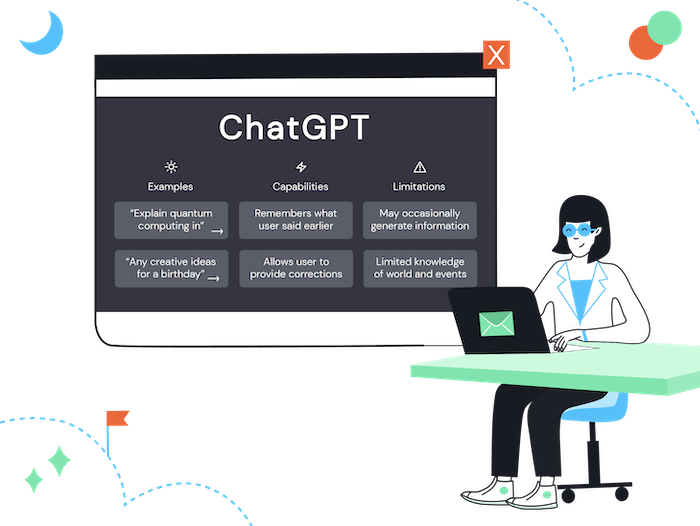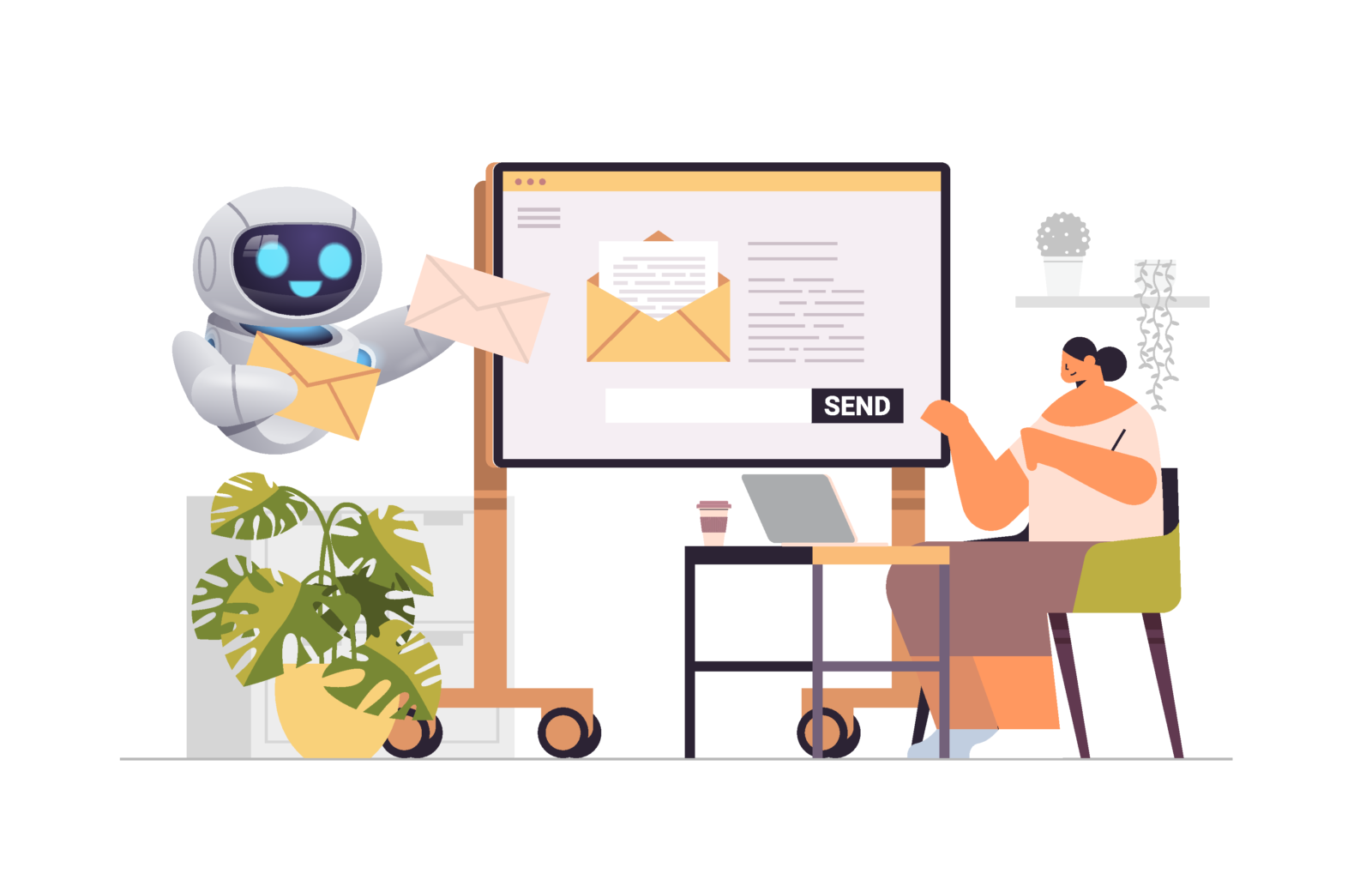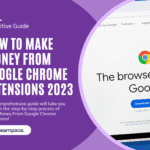AI Generated Newsletters offer a solution to streamline the creation process and deliver personalized content that resonates with your target audience
In today’s digital era, where communication plays a vital role in engaging an audience, newsletters have become an essential tool for businesses. Email newsletters, in particular, have gained immense popularity as they provide a direct channel to reach and connect with subscribers.
With the advancement of artificial intelligence (AI), businesses can now leverage this technology to create engaging and personalized newsletters. In this article, we will explore effective tips and best practices to create an engaging AI-generated newsletter.
>> How To Make Money With AI Using AI Tools 2023: Definitive Guide
AI-Generated Newsletters

Newsletter marketing plays a vital role in maintaining customer relationships, promoting brand awareness, and driving conversions. AI technology has now made it possible to automate the content creation process, allowing businesses to create newsletters efficiently and effectively.
Benefits of AI for Newsletter Creation
- Time-saving: AI-generated newsletters significantly reduce the time and effort required to create content. With AI algorithms, you can automate the generation of text, headlines, and even design elements.
- Consistent brand voice: AI ensures that your newsletters maintain a consistent tone and brand identity, enhancing brand recognition and customer loyalty.
- Improved content quality: AI algorithms analyze and learn from existing content, enabling them to generate high-quality newsletters that match or even exceed human-written content.
- Personalization: AI-powered platforms can utilize customer data, preferences, and behavior to personalize the content of each newsletter, increasing engagement and conversions.
Steps to Create an Engaging AI Generated Newsletter
Step 1: Choosing an AI-Powered Newsletter Platform
To create AI-generated newsletters, you need to select a reliable AI-powered newsletter platform. There are several options available in the market, each with its own set of features and capabilities. Some popular platforms include Typetone, Power Platform, and Writer.
Step 2: Setting Up Your Newsletter Campaign
Before diving into content creation, you need to set up your newsletter campaign.
This involves:
- Choosing an email marketing platform
- Creating a subscriber list
- Defining your campaign goals and objectives.
It’s essential to have a clear understanding of your target audience and the purpose of your newsletter.
Step 3: Defining Your Target Audience
Identifying and understanding your target audience is crucial for creating relevant and engaging newsletters. Determine the demographics, interests, and pain points of your audience. This information will guide you in tailoring the content to their preferences and needs.
Step 4: Customizing Newsletter Templates
Most AI-powered newsletter platforms provide pre-designed templates that can be customized to match your brand identity. Select a template that aligns with your business and modify it according to your requirements. Pay attention to the layout, colors, typography, and overall design to ensure a visually appealing newsletter.
Step 5: Personalizing Newsletter Content
Personalization is the key to capturing your audience’s attention. Utilize the power of AI to personalize the content of your newsletters based on subscriber data. This can include their name, location, past interactions, or purchase history. Tailor the content to their specific interests and preferences.
Step 6: Adding Visual Elements
Visual elements such as images, videos, and infographics can enhance the appeal of your newsletters and make them more engaging. AI-powered platforms often provide image recommendations based on the content or allow you to search for relevant visuals. Choose high-quality visuals that align with your message and brand.
Step 7: Optimizing Newsletter Delivery
Timing is crucial when it comes to newsletter delivery. Use AI analytics to determine the best time to send your newsletters based on subscriber behavior and open rates. Experiment with different delivery schedules and analyze the results to optimize engagement.
Step 8: Testing and Analyzing Results
Regularly test different elements of your newsletters, such as subject lines, call-to-action buttons, and content variations. AI platforms can help you A/B test different versions and analyze the results to identify what works best for your audience.
Step 9: Implementing Feedback and Improvements
Gather feedback from your subscribers through surveys or by monitoring their interactions. Use this feedback to improve the content and design of future newsletters. AI algorithms can analyze feedback patterns and provide insights for continuous improvement.
Step 10: Ensuring Compliance and Privacy
When utilizing AI for newsletter creation, it’s important to ensure compliance with data protection regulations, such as GDPR. Follow best practices for data security and privacy, and obtain explicit consent from subscribers for data collection and personalization.
Tips and Best Practices for AI Generated Newsletter

To capture the attention of readers, businesses need to create engaging newsletters that stand out from the clutter. This is where AI-generated newsletters can make a significant impact. AI-powered tools can automate various aspects of the newsletter creation process, including content curation, design, and personalization, resulting in more engaging and effective newsletters.
Be Consistent and Provide Value
Consistency is key when it comes to email newsletters. Establish a regular schedule for sending out newsletters, whether it’s weekly, bi-weekly, or monthly. This consistency helps subscribers anticipate and look forward to your content. Additionally, ensure that your newsletter provides valuable and useful information to your audience. Address their immediate needs and interests, such as sharing important dates, answering their questions, or offering exclusive insights or deals.
Keep it Short, Authentic, and Actionable
In today’s fast-paced world, attention spans are shrinking, and people are inundated with information. To engage readers, keep your newsletter content concise and to the point. Use authentic and relatable language to connect with your audience. Incorporate actionable elements, such as including clear instructions or recommendations, to encourage readers to take the desired actions.
Personalization and Targeted Content
One of the advantages of AI-generated newsletters is the ability to personalize content based on subscribers’ preferences and interests. Utilize AI-powered tools to analyze subscriber data, including past interactions with your newsletters and website, to recommend content that resonates with each individual. By sending targeted and personalized content, you can increase engagement, conversions, and overall customer satisfaction.
Use Eye-Catching Visuals
Visual elements play a crucial role in capturing readers’ attention and conveying information effectively. Incorporate eye-catching images, infographics, and videos into your newsletters to make them visually appealing. Ensure that the visuals are relevant to the content and align with your brand’s aesthetics. High-quality visuals can enhance the overall reading experience and make your newsletter more memorable.
Implement A/B Testing
To optimize the performance of your newsletters, consider implementing A/B testing. This involves creating two variations of the same newsletter and sending them to different segments of your subscriber list. Measure and compare metrics such as open rates, click-through rates, and conversions to determine which version resonates better with your audience. Continuously experimenting and refining your newsletter strategy based on data-driven insights will help improve engagement and achieve better results.
Optimize for Mobile
With the increasing use of smartphones, it’s essential to optimize your newsletters for mobile devices. Ensure that your newsletter design is responsive and adapts seamlessly to different screen sizes. Pay attention to font sizes, button placements, and overall readability on smaller screens. By providing a seamless mobile experience, you can cater to a larger audience and maximize engagement.
Include a Clear Call-to-Action (CTA)
Every newsletter should have a clear call-to-action (CTA) that guides readers towards the desired action. Whether it’s encouraging them to visit your website, make a purchase, sign up for an event, or share the newsletter with others, a well-crafted CTA can significantly impact engagement. Make the CTA stand out visually and use compelling language to motivate readers to take action.
Analyze and Learn from Analytics
Take advantage of analytics tools to gain insights into your newsletter’s performance. Track metrics such as open rates, click-through rates, and conversions. Analyze the data to understand what content resonates most with your audience and adjust your future newsletters accordingly. By continuously analyzing and learning from analytics, you can refine your strategy and deliver more engaging content.
Collaborate with AI Tools
Leverage AI-powered tools and platforms specifically designed for creating engaging newsletters. These tools can assist with content curation, personalization, design optimization, and even automated scheduling. Collaborating with AI tools can streamline your newsletter creation process, save time, and enhance the overall quality of your newsletters.
Maintain a Clean and Organized Design
A clean and organized design is essential for a professional and visually appealing newsletter. Use appropriate headings, subheadings, and bullet points to structure your content. Ensure that the layout is intuitive, with a logical flow of information. Include ample white space to improve readability and avoid overwhelming your readers with excessive text.
Segment Your Subscribers
Segmentation allows you to categorize your subscribers based on specific criteria, such as demographics, interests, or previous interactions. By segmenting your audience, you can send targeted newsletters that cater to their specific needs and preferences. This approach increases the relevance of your content and boosts engagement by delivering personalized experiences.
Ensure Deliverability and Email Compliance
To ensure that your newsletters reach your subscribers’ inboxes, it’s crucial to follow best practices for email deliverability. Pay attention to factors such as maintaining a good sender reputation, optimizing email subject lines, avoiding spam trigger words, and providing clear unsubscribe options. Additionally, ensure compliance with email marketing regulations, such as including a physical mailing address and honoring unsubscribe requests promptly.
Engage with Interactive Content
Interactive content can significantly enhance the engagement level of your newsletters. Incorporate elements such as polls, surveys, quizzes, or interactive images to encourage readers to participate actively. Interactive content not only makes the reading experience more enjoyable but also provides valuable insights and feedback from your audience.
Automate and Streamline the Process
Take advantage of automation tools to streamline your newsletter creation and distribution process. Set up automated workflows that trigger newsletter sends based on predefined conditions, such as subscriber sign-ups, event registrations, or purchase confirmations. Automation reduces manual effort, ensures timely delivery, and allows you to focus on creating high-quality content.
FAQs
Can I use AI to write the entire newsletter content?
AI can assist with content generation and personalization, but it’s essential to maintain a human touch in your newsletters. Use AI tools to curate content, optimize subject lines, and personalize recommendations, but ensure that the final output is reviewed and refined by a human writer to maintain quality and authenticity.
How frequently should I send newsletters?
The frequency of your newsletters depends on your audience and the nature of your content. It’s important to strike a balance between staying in touch with your subscribers and avoiding overwhelming them. Weekly or bi-weekly newsletters are common, but you can adjust the frequency based on engagement levels and subscriber preferences.
Can AI completely replace human writers in newsletter creation?
AI technology can automate the content creation process and generate high-quality newsletters. However, human writers still play a crucial role in overseeing the AI-generated content, ensuring brand consistency, and adding a personal touch.
How can AI personalize newsletters without compromising privacy?
AI platforms utilize aggregated and anonymized data to personalize newsletters. Subscribers’ personal information is protected, and data privacy regulations are strictly followed.
Conclusion
Creating AI-generated newsletters is a powerful way to save time, enhance personalization, and deliver high-quality content to your subscribers. By following this step-by-step guide, you can leverage AI technology to optimize your newsletter campaigns and achieve better engagement and conversions.
Also, creating an engaging AI-generated newsletter requires a combination of strategic thinking, creativity, and leveraging the power of AI tools. By implementing the tips and best practices mentioned above, you can craft newsletters that captivate your audience, drive interactions, and deliver value. Remember to continuously experiment, analyze data, and refine your approach to optimize engagement and achieve your newsletter goals.



